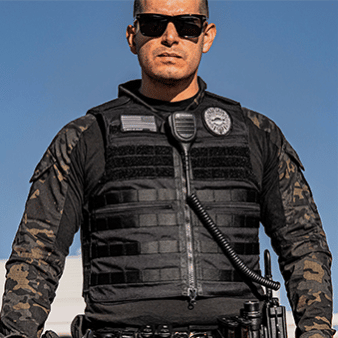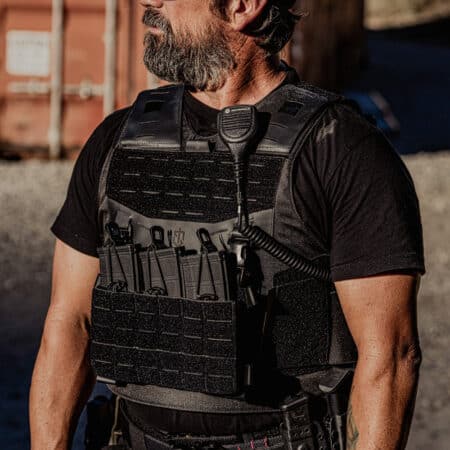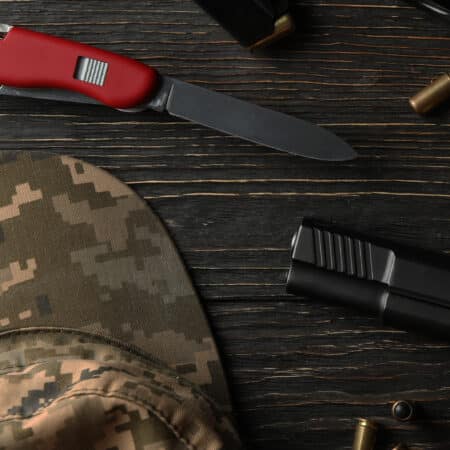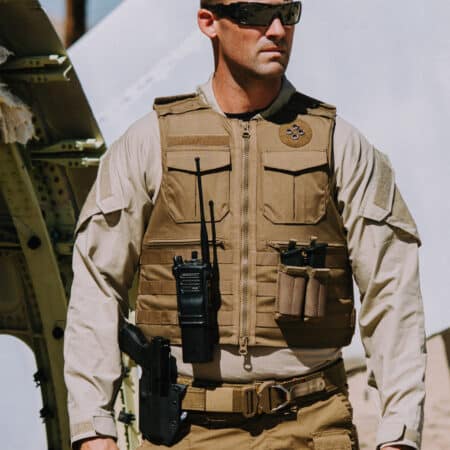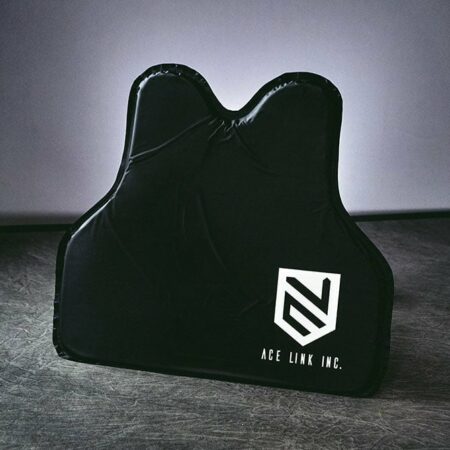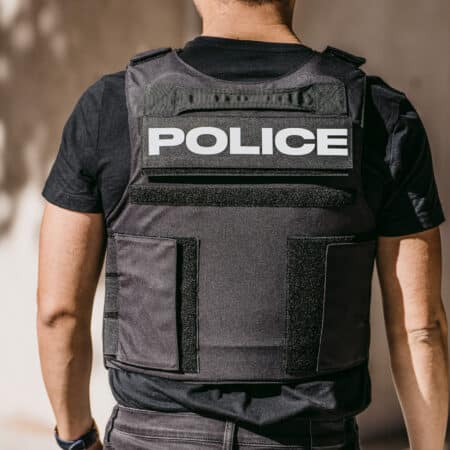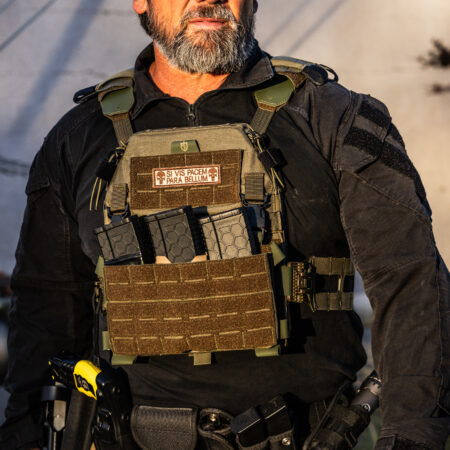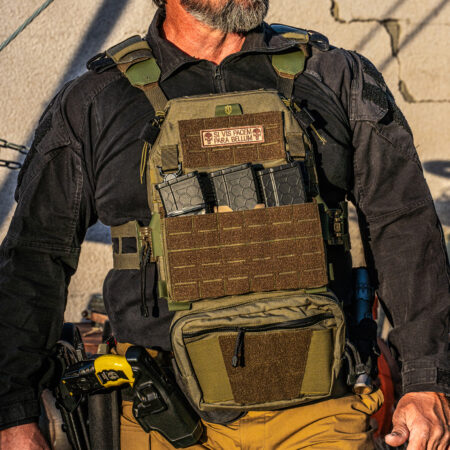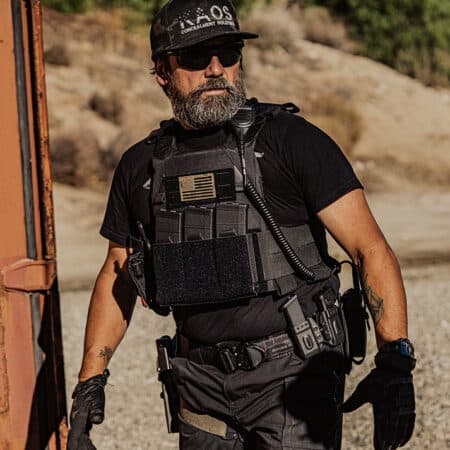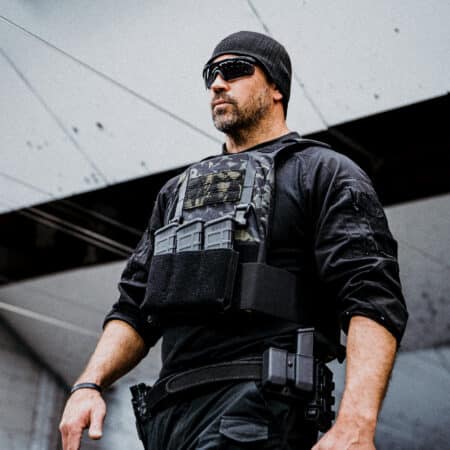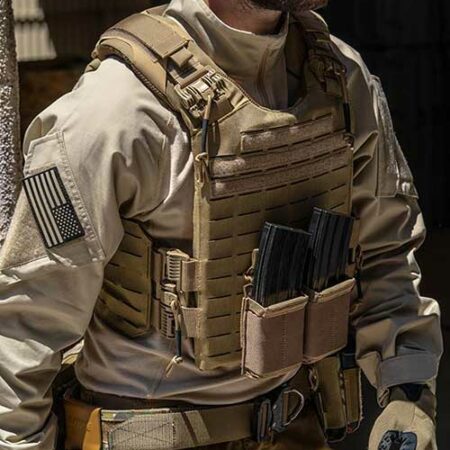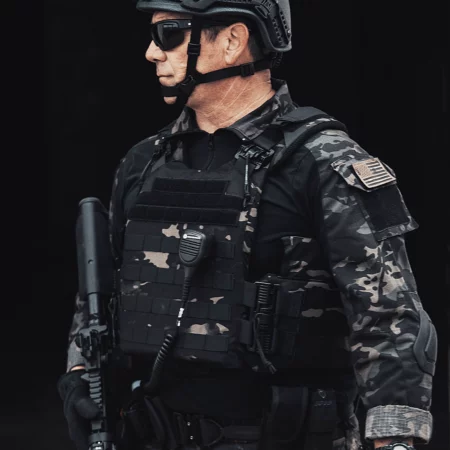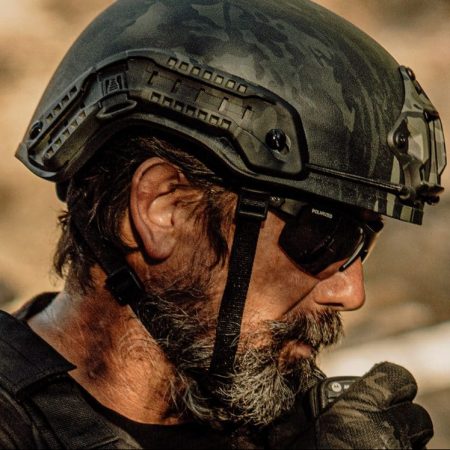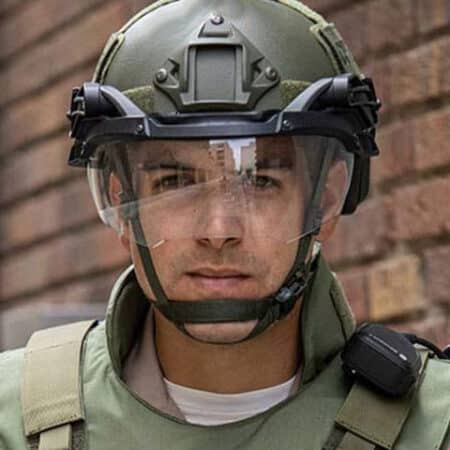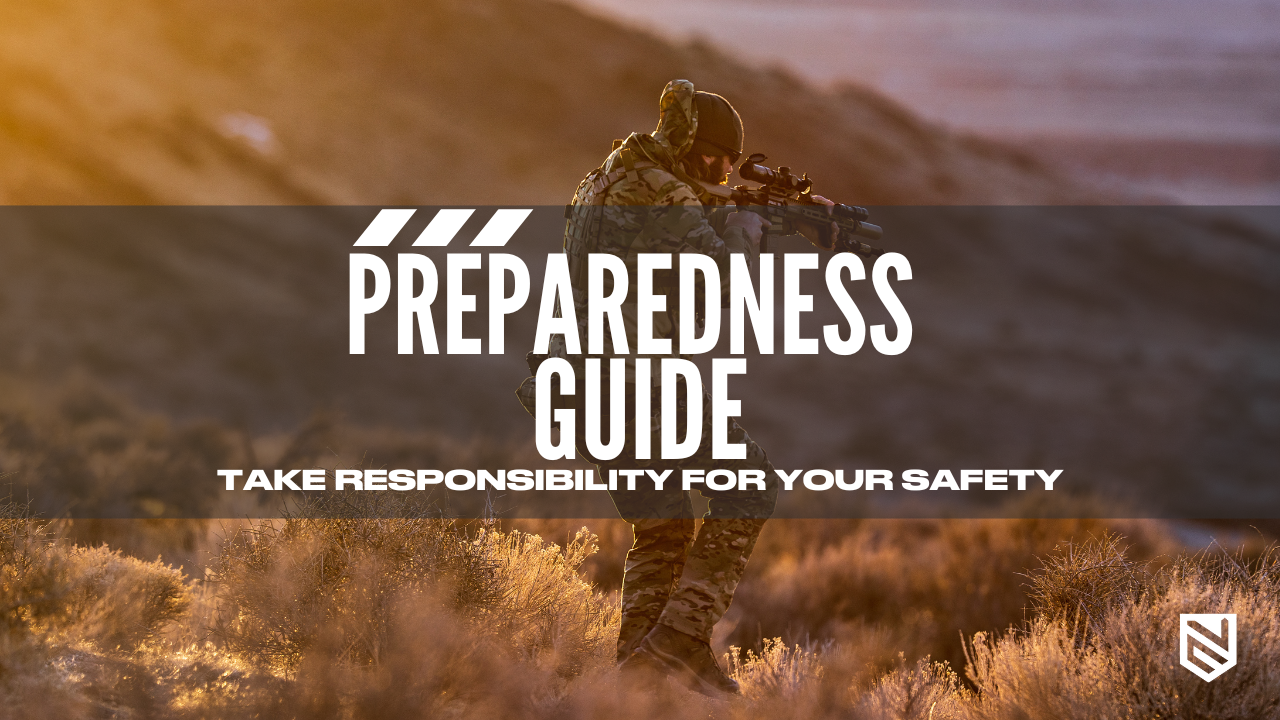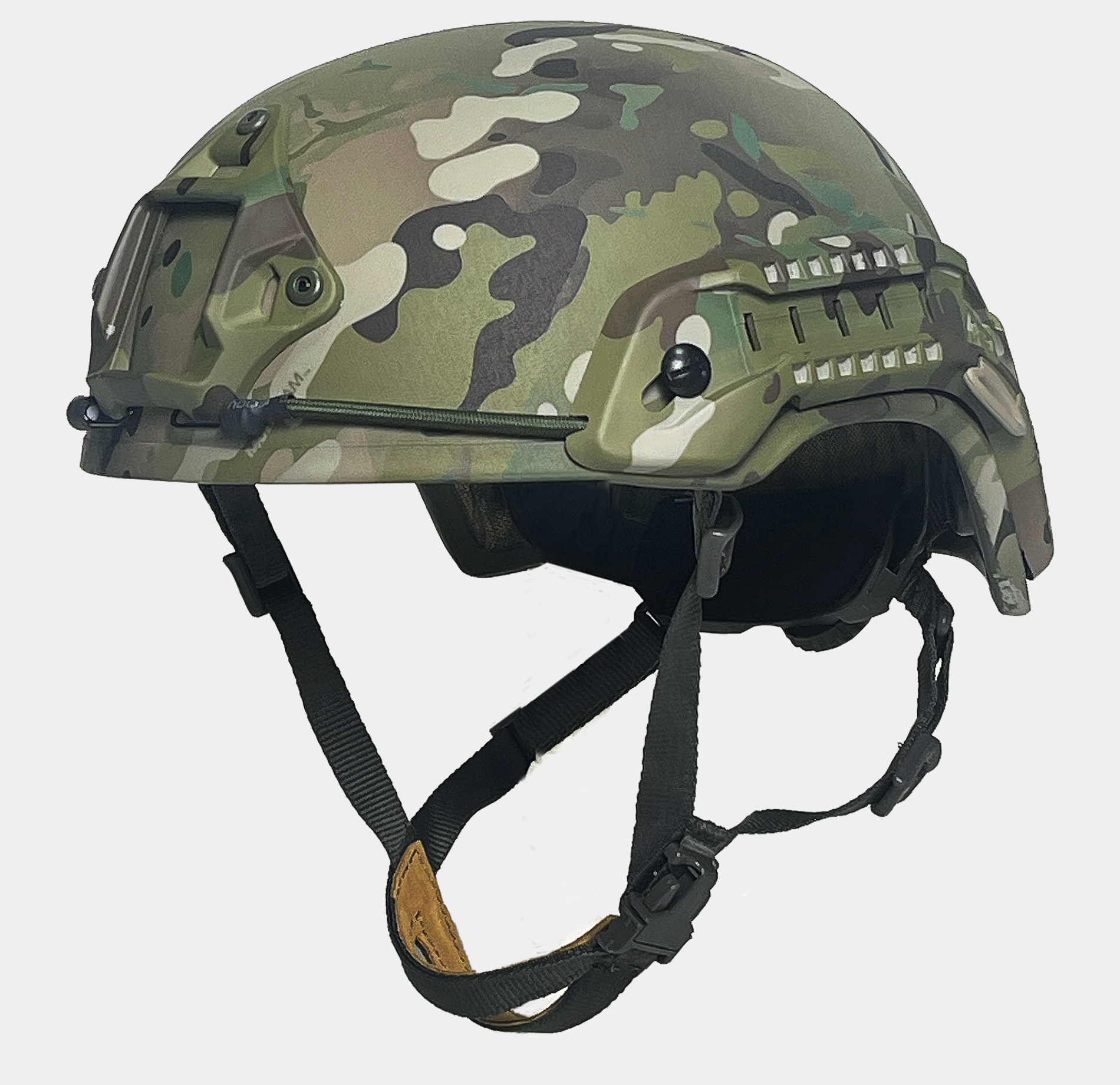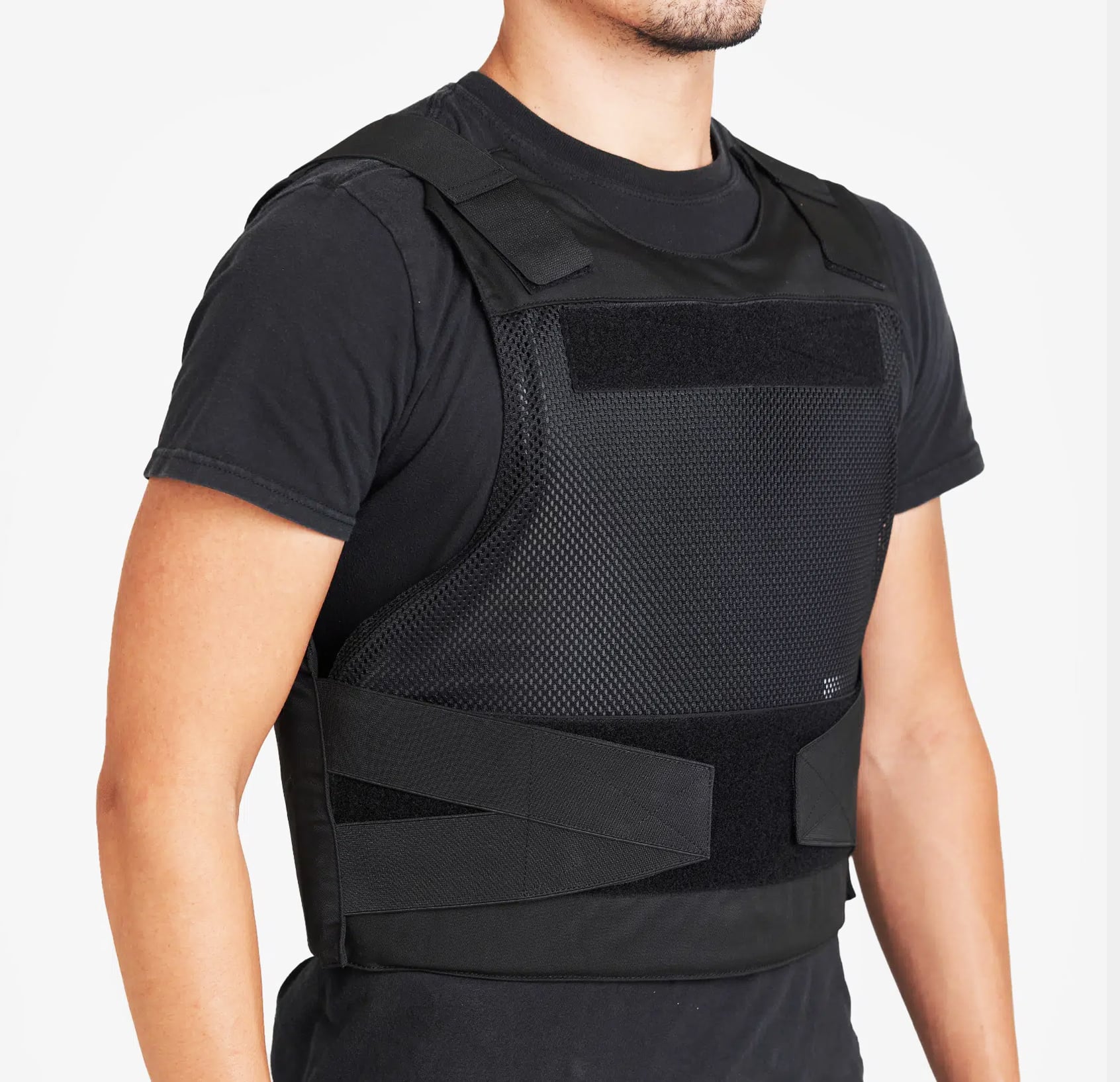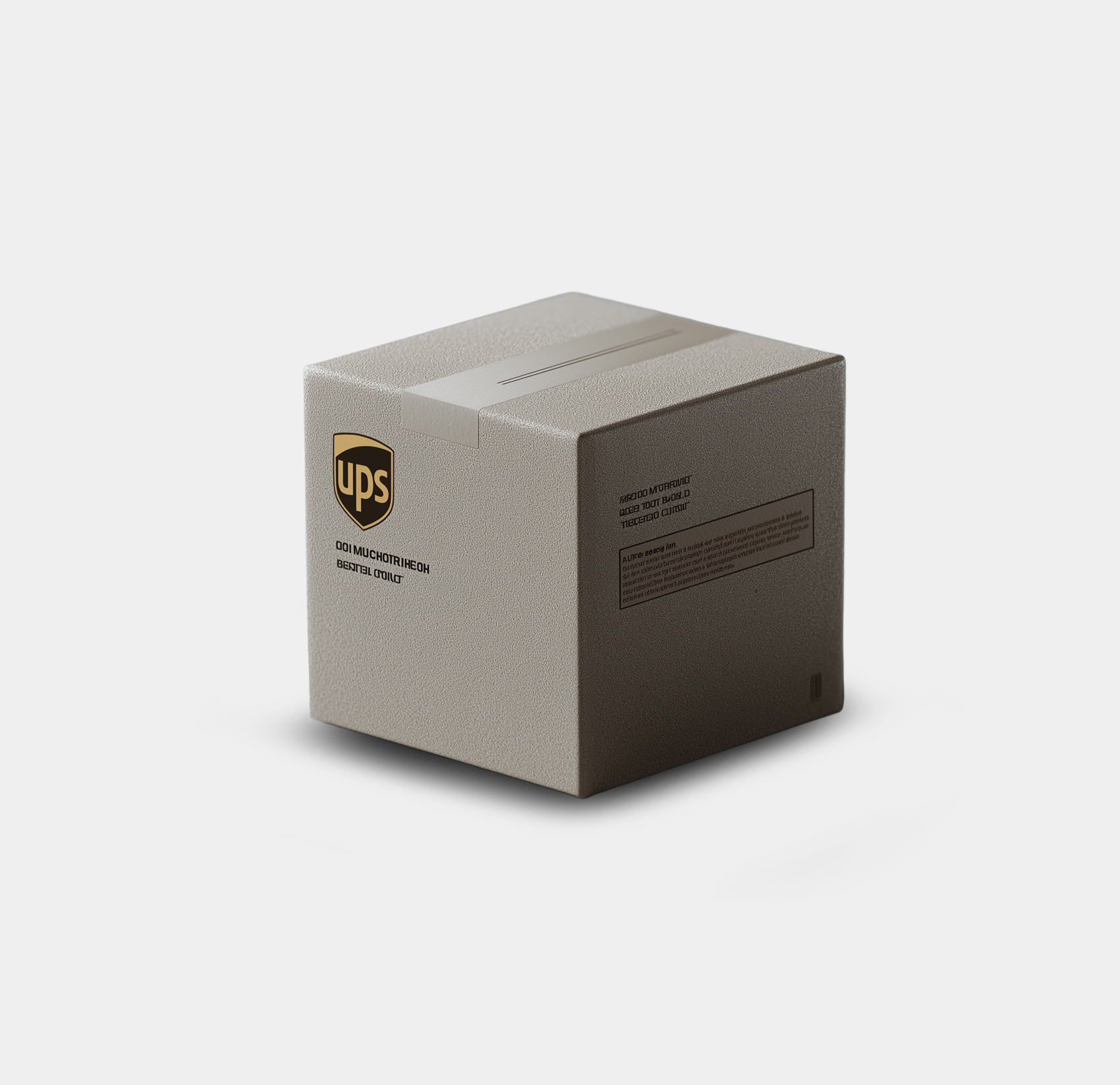- Why Personal Awareness Matters in Preparedness
- Actionable Strategies to Boost Your Safety Preparedness
- Assess Threats in Your Region
- Assess Personal Circumstances:
- Plan Your Reaction
- Build a 3-Day Emergency preparedness Kit
- Learn Basic Survival and preparedness Skills
- Maintain and Update Your Plan (and Gear)
- Involve Your Family (or Team)
- Stay Informed and Verify Information
- Strengthen Physical and Mental Resilience
- Physical Resilience
- Mental Resilience
- Common Myths vs Facts
- Bottom line:
- Ace Link Armor in Action: A Life-Saving Vest
- Summary and Call to Action
In today’s world, emergencies can strike anyone – from first responders on duty to families at home. Whether you’re a police officer, firefighter, security professional, or a prepared civilian, one principle holds true: your awareness is your security. Taking charge of your own safety isn’t paranoid or optional; it’s essential. This comprehensive Preparedness guide outlines why you must take responsibility for your safety and how to do it, step by step. Read on to learn practical strategies that will empower you to protect yourself, your team, and your loved ones in any situation.
Why Personal Awareness Matters in Preparedness
Personal awareness in preparedness means recognizing risks and being ready to respond. Safety starts with you—first responders train for this, but civilians must also stay alert. In a crisis, help may be delayed: police and firefighters could be minutes away, or in major disasters, you might be on your own for days. Preparedness makes the difference between panic and survival.
Taking responsibility for your safety involves situational awareness (staying alert to your environment) and planning ahead for emergencies. Studies have shown that people who understand how to prepare are far more likely to take life-saving actions. For example, a recent FEMA survey found that individuals who had received preparedness information were five times more likely to take at least three emergency readiness steps compared to those who hadn’t . In other words, knowledge and awareness directly drive action.
Equally important is accepting that personal security is your own duty. It’s natural to hope that 911 responders will save the day – and often they do – but you can’t rely on others as your only plan. Truly prepared people cultivate a self-reliant mindset. This doesn’t mean you must handle dangers alone; it means you’ve done everything you can to be ready until help arrives. For professionals in law enforcement or security, this mindset is second nature. For civilians, it’s about adopting that same level of vigilance in daily life.
By the end of this guide, you’ll understand how to identify the threats you face, devise effective emergency plans, assemble life-saving kits, and harden yourself physically and mentally. Let’s break down the actionable strategies that will boost your preparedness and confidence.
Actionable Strategies to Boost Your Safety Preparedness
Now let’s get practical. Below are key strategies and steps you can take today to enhance your personal safety and emergency preparedness. Each strategy is broken into clear actions so you can start implementing them right away. By following these, you’ll build a solid foundation of readiness that serves both tactical professionals and safety-conscious civilians alike.
Assess Threats in Your Region
Not all emergencies are created equal – your location largely determines what threats you should prepare for. Start by assessing the risks in your region. What disasters or dangers are most likely where you live and work? For example, a wildfire-prone California community faces different risks than a coastal Florida town (hurricanes) or a downtown urban center (crime or civil unrest). Research the history of incidents in your area and note any patterns.
Identify Local Hazards:
Make a list of potential emergencies you could encounter. This includes natural disasters (storms, earthquakes, floods), industrial or hazmat accidents if you live near factories or rail lines, and crime threats (home invasions, active shooter situations) in your community.
Use Official Resources:
Tap into reliable sources to learn about area-specific risks. FEMA’s Ready.gov site suggests learning “what disasters and hazards could affect your area, how to get emergency alerts, and where to evacuate if needed.” . Many local governments publish hazard assessments or emergency guides—find yours and read it.
Consider Frequency and Timing:
Determine which threats are seasonal (like hurricanes or wildfires) and which could strike anytime (like house fires or break-ins). This helps prioritize your preparations. For instance, if you’re in “Tornado Alley,” you know spring is tornado season and can plan drills accordingly.
Assess Personal Circumstances:
Include personal factors in your threat assessment. Do you or family members have medical needs (e.g. require refrigerated medication during power outages)? Do you work in a high-risk profession that could bring safety threats home? Tailor your awareness to these details.
By understanding the specific challenges you might face, you won’t be caught off-guard. A police officer or firefighter would never go into an area without a risk briefing; similarly, you should know your environment. This assessment forms the backbone of all further planning. For example, if crime is a concern, you might decide to invest in stronger home security or even personal protective gear like ballistic vests  as an extra layer of safety. If you live in a flood zone, you’ll focus on evacuation routes and flood-proofing your home. The bottom line: know your enemy. Once you’ve identified the threats, you can plan how to tackle them.
Plan Your Reaction
Having identified the likely threats, the next step is to plan your reactions to those emergencies. When chaos strikes, having a well-rehearsed plan is invaluable. It replaces panic with purpose. As the saying goes, “Under pressure, you don’t rise to the occasion – you fall to the level of your training.” A solid emergency plan is your training script for how to act when every second counts.
Start by brainstorming scenarios: If X happens, what will I do? Consider everything from a house fire at 2 AM, to an earthquake at work, to an intruder breaking in, to a medical emergency with a family member. For each scenario, map out a simple response plan. Involve your household or team in this process so everyone is on the same page.
Key elements to address in any emergency plan include:
Communication:
How will you contact each other if an emergency strikes? Have at least two methods (phone, radio, a meeting point). Example: Decide on a family meetup spot just outside your home for a fire, and another spot in your neighborhood in case you can’t return home.
Alerts and Warnings:
How will you receive emergency alerts? Ensure you have a way to get warnings day or night. This could be signing up for local text alert systems, using smartphone alert apps, or keeping a NOAA weather radio. (Many communities offer free alert services – take advantage of them, since only about 36% of people currently do ).
Shelter and Evacuation:
Determine the safest places to shelter for different hazards. For a tornado, that might be an interior windowless room or basement. For a chemical spill, it might mean sealing the room (doors/windows off) or evacuating upwind. Also plan escape routes: know at least two exits out of your home and the quickest route out of your neighborhood or city if you must evacuate.
Roles and Responsibilities:
If you have family or a team, assign tasks. Who grabs the emergency kit? Who helps the kids or the pets? Who calls 911? Assigning roles prevents confusion. For example, one parent could be in charge of collecting the children, while the other grabs the kit and phone.
Pro Tip:
FEMA recommends discussing key questions with your household when making your plan: How will you get emergency alerts? Where will you shelter or evacuate? How will you stay in touch if separated?  Write down your answers and keep them in a plan document everyone can access.
Once your plans are drafted, practice them. Conduct fire drills at home; do a “blackout night” to simulate a power outage; practice an earthquake “drop, cover, hold” drill. If you carry out these drills a few times a year, the responses will become muscle memory. For those in protective services, integrate family plans with your duty knowledge – for instance, a security professional might practice a home invasion drill with their family, applying tactics from work. The goal is that when an emergency hits, you won’t be making decisions on the fly; you’ll be executing a plan you’ve already thought through. That confidence can save lives.
Build a 3-Day Emergency preparedness Kit
A well-prepared 72-hour emergency kit includes water, food, first aid supplies, and other essentials to sustain you and your family for several days. Having an emergency kit (often called a “go bag” or 72-hour kit) is non-negotiable in preparedness. In a disaster, you may need to survive on your own for multiple days, and stores or services might be unreachable. Building a 3-day emergency kit now means you won’t scramble for critical supplies later.
Start with the basics recommended by emergency management officials. FEMA suggests at minimum a three-day supply of water (one gallon per person per day) and non-perishable food for each person . Think canned goods, energy bars, dried foods – items that are calorie-dense, have a long shelf life, and don’t require cooking (in case you have no power). Don’t forget a can opener if you pack cans!
Here’s a checklist of core items for your 72-hour preparedness kit:
Water and Food:
As noted, aim for 3 gallons of water per person (for drinking and sanitation). Pack easy-to-eat foods like canned meats, peanut butter, granola, dried fruit, etc. Rotate the stock periodically to keep it fresh.
First Aid Kit:
Include bandages, antiseptic wipes, medical tape, pain relievers, any critical prescription meds (talk to your doctor about keeping an extra supply), and basic OTC medications (anti-diarrheal, antihistamine, etc.).
Light and Communication:
Pack flashlights with extra batteries, a battery-powered or hand-crank radio (so you can get news if the power is out), and a whistle (useful for signaling for help in debris or to get attention).
Tools and Safety Items:
A multi-tool or basic toolkit (wrench, pliers) can help you turn off utilities or make repairs . Include a dust mask or N95 mask to filter contaminated air (think wildfire smoke or dust after a building collapse) . Duct tape and plastic sheeting can be used to seal windows or patch leaks in a pinch . Also throw in work gloves and sturdy shoes in case you need to walk through debris.
Personal Essentials:
Hygiene items (toilet paper, moist towelettes, garbage bags) for sanitation , a few changes of clothes (appropriate to your climate; include rain gear or warm layers as needed), and blankets or emergency Mylar space blankets for warmth. Don’t forget eyeglasses or contacts supplies if you need them, and any items for babies (diapers, formula) or pets (pet food, leash).
Documents and Cash:
Keep copies of important documents (IDs, insurance policies, medical records) in a waterproof pouch. Have some cash in small bills – during power outages, ATMs and card readers won’t work, so cash is king.
Specialty Items:
Tailor the kit to your needs. For example, include an extra phone charger or portable battery bank for your phone . If you own firearms or self-defense tools, include accessories like extra ammunition or pepper spray (and secure them properly). Some prepared individuals also add personal protection equipment – e.g. a ballistic helmet or concealable ballistic vest – especially if they anticipate civil unrest or dangerous evacuations, but this is a personal choice based on your threat assessment.
Once assembled, store your kit in an easily accessible place. A sturdy duffel bag or backpack works well for portability. You want to grab it and go if you must evacuate, or easily haul it to your safe room if sheltering in place. Make sure every household member knows where the kit is kept.
Finally, maintain your kit over time. Check it at least twice a year (for example, every spring and fall or during daylight savings clock changes). Replace expired food, refresh water supplies, update the contents as your family’s needs change. Ready.gov advises to “re-think your needs every year and update your kit as your family’s needs change” . There’s no point in having a kit full of spoiled food and dead batteries – keep it ready for prime time!
Product Comparison
Learn Basic Survival and preparedness Skills
All the gear in the world won’t help if you don’t know how to use it or if you freeze under pressure. That’s why learning basic survival and self-defense skills is a cornerstone of taking responsibility for your safety. You don’t need to become Rambo or a Navy SEAL; start with fundamental skills that anyone can (and should) learn:
First Aid & CPR:
In emergencies, medical help might be delayed. Knowing how to perform CPR, stop bleeding, treat wounds, or handle a fracture can save a life – perhaps a loved one’s. Take a first aid/CPR course (organizations like the Red Cross or local fire departments offer them regularly). Ensure you know how to use everything in your first aid kit. Practice critical skills: for example, learn to tie a tourniquet, splint an arm, and recognize signs of a concussion or shock.
Fire Safety & Utilities:
Learn how to use a fire extinguisher (remember the PASS technique: Pull the pin, Aim at base, Squeeze, Sweep). Every adult and teen in your household should know this. Also learn how to shut off your home’s utilities (water, gas, electricity) in an emergency to prevent fires or flooding. Keep necessary tools (like a gas shut-off wrench) handy.
Self-Defense Techniques:
You can’t always avoid a physical threat. Basic self-defense training – such as how to break free from grabs, how to strike vulnerable points, and how to maintain distance – can be extremely empowering. Consider taking a self-defense class or martial arts training. If you are a firearms owner, get proper training on safe handling and marksmanship, and practice regularly. Owning a weapon without training can create a false sense of security, so commit to responsible skill-building. The same goes for using pepper spray, tasers, or any defensive tool – practice scenarios where you might need them.
Survival Skills:
If you enjoy the outdoors (or want to be ready if you must rough it), learn a few wilderness survival basics. How to start a fire without matches, how to purify water, how to navigate with a map and compass, and how to build a basic shelter are valuable skills if you ever get stranded. These might seem like “extreme” prepper skills, but consider scenarios like a major earthquake or hurricane where you might be outdoors or without infrastructure for a while. Knowledge is lightweight and could come in handy.
Situational Awareness Drills:
Practice being aware of your surroundings in everyday life. This is more of a habit than a “skill,” but it can be developed. For example, when you enter a building, note the exits. In a parking lot or on patrol, keep your head up and scan your environment (as many police are trained to do). Play the “what if” game in your mind: “What would I do right now if X happened?” This mental rehearsal reduces reaction time in a real event.
For professionals, many of these skills are job requirements (you already know them well). But don’t forget to teach relevant skills to your family. A firefighter’s child should know how to crawl low under smoke; a police officer’s spouse should know basic firearm safety if there’s a gun in the home, and so on. For civilians, remember that basic survival skills are not just for adventurers – they are life skills. There’s pride and peace of mind in being self-sufficient. Plus, learning these can be fun (camping trip, anyone?) and build confidence.
By investing time in training, you not only increase your ability to handle emergencies, but you also reduce the panic and anxiety that can accompany them. Instead of “Oh no, what do I do?”, you’ll find yourself saying, “I’ve got this,” because you’ve done it before.
Maintain and Update Your Plan (and Gear)
Preparedness is not a one-and-done task – it’s an ongoing process. Lives change, environments change, and plans must adapt. Maintaining and updating your emergency plan and gear is a strategy in itself. Treat it as a regular part of your life, much like servicing a vehicle or scheduling a medical check-up.
Schedule Plan Reviews:
Mark a date on your calendar (at least once a year, if not every 6 months) to review and update your emergency plan. Go over those scenario reactions you mapped out. Have there been changes in your household? (New baby, new pet, someone moved out, etc.) Have you relocated to a new area with different threats? Update contacts, meeting points, and procedures accordingly.
Refresh Emergency Contacts:
Ensure phone numbers are current and add any new contacts (neighbors, out-of-town relatives, doctors). If you laminated a wallet card or have everyone input the info in their phones, make sure it’s up to date. It’s smart to have an out-of-state contact everyone can relay messages through if local lines are jammed.
Drill, Drill, Drill:
Conduct regular drills and make them slightly different each time. Try a fire drill in the middle of the night to simulate waking up from sleep. Practice evacuating the house in under 2 minutes. Vary scenarios: “What if the front door is blocked by fire? Let’s use the secondary exit.” After drills, do a quick debrief – what went well, what needs improvement? This continuous practice keeps everyone’s skills sharp and highlights any parts of the plan that might need tweaking.
Inspect and Maintain Gear:
Remember that emergency kit you built? Maintain it diligently. Replace expired food, batteries, and medicines as needed (set reminders for these). Check that electronics like flashlights and radios are functional. If you’ve included high-tech gear (drones, generators, etc.), service them per manufacturer schedules. For those with tactical gear like body armor, regularly inspect it for wear and tear; replace it according to recommended service life. Hard armor plates, for instance, have a shelf life – don’t assume they last forever if they’ve been through rough use.
Update Home Safety Measures:
Maintenance also means physical preparations. Test your smoke alarms and CO detectors monthly; change their batteries at least yearly. If you installed security cameras or alarms, ensure they’re functioning and sensors are clean. Check fire extinguishers’ pressure gauges (replace or service if needed). Little upkeep tasks like trimming tree branches away from your roof (fire prevention) or clearing gutters (flood prevention) can pay dividends in an emergency.
Stay Educated:
The world of preparedness evolves. New threats emerge (like pandemics did), and new tools become available. Subscribe to safety newsletters or follow reputable preparedness blogs (like Ready.gov or FEMA updates). You might learn about a better way to do something or a new hazard you hadn’t considered. Being a lifelong learner in safety keeps your plans relevant and effective.
The goal of maintenance is to ensure that when an emergency does happen, your carefully laid plans and equipment actually work. There’s nothing worse than confidently grabbing a flashlight only to find its batteries died long ago. By keeping up with these tasks, you sustain a state of readiness. Preparedness is a habit – cultivate it. It shows true responsibility for your own safety.
Involve Your Family (or Team)
Emergency preparedness is most effective when everyone around you is on board. You don’t want to be the only one who knows what to do. That’s why involving your family (or your work team, for professional settings) is crucial. Preparedness is a team sport. It not only spreads the responsibility; it also increases everyone’s chances of staying safe.
Here’s how to get your household actively involved in your home and family protection plan:
Educate and Empower:
Hold a casual family meeting about safety. Discuss the types of emergencies you’re preparing for and why you’re taking these steps. Keep it age-appropriate – you want to inform, not scare. For kids, emphasize that just like fire drills at school, these preparations are to help everyone stay safe. Show them where the emergency kit is and what’s inside. Teach them how and when to dial 911. The more your family knows, the calmer they’ll be in a crisis.
Assign Roles:
As mentioned in the planning section, give each family member responsibilities suited to their age and ability. Maybe one of the older kids is in charge of grabbing the “go bag” or the younger child’s hand during an evacuation. Perhaps your spouse is the one to turn off the gas line, while you handle communications. Write down these roles and practice them. This not only gives everyone a job (reducing panic), but also a sense of purpose and teamwork.
Conduct Family Drills:
Practice makes perfect. Involve everyone in drills. For example, test a nighttime fire drill: everyone gets out of the house and meets by the big oak tree across the street within two minutes. Or practice a lockdown drill: simulate a scenario where everyone must shelter in a safe room (useful for tornado or intruder situations). Rotate scenarios so kids and adults practice different responses – one time it’s a fire, next time it’s an earthquake, another time it’s a severe weather shelter-in-place. Make drills a bit of a game for kids – you can time them and then try to beat the time next drill. Reward the family with a treat afterward to keep morale positive.
Family Input:
Encourage questions and ideas from your family. They might surprise you with a perspective you missed. Maybe your teenager suggests an alternate evacuation route from school, or your spouse has an idea for communicating if phones are down. Incorporate good ideas, so everyone feels ownership of the plan.
Extended Family & Neighbors:
Preparedness shouldn’t stop at your front door. If you have trusted neighbors, consider forming a small community safety network. Share spare keys, exchange emergency contact info, and perhaps plan to check on each other after a disaster. If you’re comfortable, you can even coordinate resources (e.g., one neighbor has a generator, another has a pool as water source, etc.). Remember, during large-scale emergencies, neighbors often become first responders to each other. Only 12% of people have actually coordinated plans with neighbors  – improving this can save lives. Similarly, loop in nearby relatives or friends on your plans, especially if they’re part of your evacuation destination or support system.
For those in professional teams (police squads, fire crews, security details), involve your colleagues in preparedness beyond the workplace mandates. Discuss family plans at the station or office – coworkers can share tips and support each other’s planning. Some departments host family orientation days on emergency preparedness, which is fantastic for building a culture of readiness at home.
The key takeaway:
Everyone should know what to do, not just you. In an emergency, each person will react better if they’ve been included in planning and practice. Unity and coordination can turn a potentially chaotic event into a controlled response. And there’s a side benefit too – involving your family in these activities can bring you closer together. You’re building trust and resilience as a unit, which is rewarding in its own right.
Stay Informed and Verify Information
In any crisis, information is power – but only if it’s the right information. Staying informed before and during emergencies, and being able to sort fact from fiction, is another critical part of taking responsibility for your safety. We live in an age of instant news and also rampant misinformation, so you must be your own intelligence officer.
Stay Informed (Before an Emergency): Proactive awareness can give you a crucial edge. Here are some ways to stay in the loop on emerging threats:
Emergency Alerts:
Sign up for official emergency alert systems in your area. These could be text message alerts from your city/county for things like severe weather, Amber alerts, or civil emergencies. The FEMA app and services like NOAA Weather Radio can also push alerts to you for dangerous weather. Take advantage of these free tools – they can warn you minutes or hours before an event hits. Unfortunately, many people skip this step (only about a third of Americans had signed up for alerts as of 2023 ), but it’s easy and could save your life.
News and Weather Monitoring:
Keep an eye on reliable local news, especially when conditions seem iffy. If a big storm is forecast, tune into the weather report daily. During wildfire season or other ongoing threats, check official updates (from sources like National Weather Service, USGS for earthquakes, or local authorities). Follow social media accounts of your local police, fire department, and emergency management – they often post timely updates. Just ensure these are official accounts to avoid rumors.
Intelligence Gathering:
For security professionals, this might mean staying informed about crime trends or potential unrest in your area. Tools like neighborhood crime apps or briefings from law enforcement intel can help. For civilians, being informed might be as simple as knowing if there have been break-ins in your neighborhood recently, or being aware of a boil-water advisory. Join community groups or apps (like Nextdoor) to get local chatter – but always verify info from such sources.
Verify Information (During an Emergency): In the heat of a crisis, especially one that unfolds over hours or days (say a pandemic, or widespread power outage, or civil disturbance), misinformation can spread quickly. To act responsibly, you need to verify what you hear before reacting:
Stick to Trusted Sources:
Rely on official channels whenever possible. If you hear a rumor (“the dam broke upriver!” or “there’s looting in our area!”), check if it’s confirmed by police, fire, or emergency management. Misinformation can cause unnecessary panic or dangerous misdirection. For example, during natural disasters, false rumors about evacuation orders or road closures often circulate. Always double-check with local authorities or reputable news outlets before changing your plans.
Cross-Reference News:
Look for multiple reports saying the same thing. If several credible news outlets and government sources report the same development, it’s likely true. If it’s only on one sketchy social media post, be skeptical. In large emergencies, consider using a battery-powered radio to get news if internet or cell service is down – the Emergency Alert System (EAS) broadcasts via radio will have vetted information.
Beware of Scams:
After disasters, scammers come out of the woodwork. Verify the identity of anyone who contacts you claiming to be an official (e.g., asking for personal info for relief aid – official agencies won’t usually ask for things like your Social Security number out of the blue). Also be cautious with fundraising scams; if you want to help or receive help, go through established organizations.
Personal Reconnaissance:
Sometimes you might need to verify something yourself safely. For instance, if you hear your neighborhood is being evacuated but haven’t seen an official notice, you could carefully check outside or ask a neighbor if authorities have come by. Use judgment here – never put yourself in harm’s way to chase information. If in doubt, err on the side of caution (better to evacuate on a false alarm than stay during a real order you weren’t sure about).
By staying informed, you essentially have an early warning system for danger. By verifying, you filter out noise that could lead you astray. The combination of the two keeps you situationally aware in the truest sense – knowing what’s happening, when, and what actions to take based on accurate information. Remember, part of “awareness” is not just seeing or hearing things, but understanding what is really going on. Develop a habit of listening to that emergency scanner or checking that alert app regularly. It’s a small effort with potentially huge payoffs.
Strengthen Physical and Mental Resilience
The final strategy might be the most overlooked: building your physical and mental resilience. All the planning and equipment will only be as effective as the person wielding them. Taking responsibility for your safety also means taking care of your body and mind so you can rise to the challenges an emergency throws at you.
Physical Resilience
This isn’t about bench-pressing huge weights; it’s about functional fitness and stamina to endure stress.
Fitness for Emergency Tasks:
In a crisis, you may need to run, climb, lift, or carry. Could you sprint a few blocks with a heavy go-bag on? Could you carry an injured family member or hoist yourself over a wall if needed? Tailor your fitness routine to possible emergency tasks. Exercises like hiking with a backpack, stair climbing, or interval running can simulate the exertion of escaping danger. Strengthen core and legs for lifting and crawling. A firefighter in full gear or a police officer in a foot chase knows the value of conditioning – civilians should aim for a baseline of fitness too.
Endurance and Health:
Being generally healthy improves your odds in any stressful event. Maintain a balanced diet and keep chronic conditions managed (take those meds, see your doctor). In disasters, medical facilities might be overwhelmed, so a strong body is your best defense. Even flexibility and balance matter – avoiding injury while evacuating through debris or on uneven ground can hinge on agility. Consider activities like yoga or martial arts which improve balance and body control.
Hands-On Practice:
Build muscle memory for using your safety equipment. Actually try on and move around in that ballistic vest or helmet if you have one, so you’re comfortable with it. Practice assembling that water filter or generator you bought. The more you physically engage with your tools and plans, the more prepared you’ll be when adrenaline is high.
Mental Resilience
Emergencies are as much a psychological battle as a physical one. Keeping calm, focused, and decisive under extreme stress is tough but trainable.
Stress Inoculation:
One way professionals build mental toughness is through exposure to controlled stress. You can do smaller scale versions: during drills, simulate the chaos (play loud noises, run it in the dark, etc.) to feel the pressure. Timed drills or competitions can also create a bit of stress to work through. The more you push your comfort zone, the more comfortable you become in unpredictable situations.
Mindfulness and Breathing:
Learn techniques to control panic. Deep breathing exercises can slow your heart rate and clarify your thinking in a crisis. Techniques used by Navy SEALs, like “box breathing” (inhale 4 seconds, hold 4, exhale 4, hold 4), can help regain calm. Mindfulness training (being able to focus on the present and not be overwhelmed by fear) is incredibly useful. Some first responders use combat breathing or tactical breathing under duress – civilians can benefit from the same.
Mental Rehearsal:
Visualization is powerful. Regularly imagine yourself in an emergency scenario, but importantly, visualize yourself succeeding and handling it. For example, close your eyes and picture a fire in your home – see yourself calmly executing the escape plan, getting everyone out safely, calling 911. This kind of mental dress rehearsal builds confidence and can make your response more automatic in real life. Athletes do it all the time; survivors can too.
Adaptability:
Foster a mindset of adaptability. Plans might go awry, and when they do, you’ll need to improvise. Remind yourself that you can handle uncertainty. Embrace problem-solving challenges in everyday life to practice flexibility. Something as simple as doing an outdoor adventure (like a tough hike where things don’t go exactly as planned) can teach you to adapt and persist.
Emotional Support:
A resilient mind also knows when to lean on others. Build a support network – friends, colleagues, support groups – where you can debrief after stressful incidents (or even just talk through your preparedness anxieties). Sometimes the act of sharing fears or experiences can fortify your mental health. If an event has a traumatic impact, seeking professional help is also a sign of strength, not weakness.
Physical and mental resilience go hand in hand. A strong body empowers a strong mind, and a determined mind pushes a body further. You don’t need the physique of a SWAT officer or the nerves of a bomb tech; you just need to be a bit stronger and steadier than you were yesterday. Gradual improvements in fitness and mindset compound over time. By prioritizing health and resilience, you ensure that you as the implementer of all these plans are as reliable as the plans themselves. After all, you are your greatest survival tool.
Common Myths vs Facts
Even with all this information, there are still plenty of misconceptions about personal safety and emergency preparedness. Let’s bust some of those common myths that might be holding you or others back, and set them straight with facts:
Myth: “I can always rely on the professionals (police, fire, EMS) to save me – I don’t need to prepare much myself.”
Fact:
First responders are heroes, but they can’t be everywhere at once. In a wide-scale disaster, help could be hours or days away. Even in a local crisis, the average police or ambulance response can be many minutes – precious time you need to fend for yourself. You are the first line of defense in your own emergency. Being prepared bridges the gap until help arrives. Remember, when an emergency happens, it’s too late to start planning – by the time firefighters show up, you should have already gotten yourself out safely.
Myth: “Emergency preparedness is only for ‘doomsday preppers’ or it’s too complicated and expensive for regular people.”
Fact:
Preparedness is for everyone, and it doesn’t have to break the bank. You don’t need an underground bunker or a year’s supply of food to be ready for most emergencies. In fact, many preparedness steps are free or low-cost: making a family plan, signing up for alerts, learning CPR, or storing a few days of food and water at home. You can build a kit gradually, buying one or two extra items on grocery trips. Government agencies even offer free resources and guides to help people prepare . Being ready isn’t “extreme” – it’s practical and smart. Disasters won’t care who you are; everyone from suburban families to city apartment dwellers benefits from preparedness.
Myth: “Nothing bad ever happens around here. Emergencies are so rare, it probably won’t happen to me.”
Fact:
Emergencies are more common than we like to think. Everyday somewhere, someone’s facing one. For perspective, in the United States a home structure fire is reported every 95 seconds on average . That’s dozens of families facing a house fire just during the time it takes you to read this article. Floods, power outages, severe storms, accidents – something can happen anytime, anywhere. It’s optimistic to hope for the best, but wise to prepare for the worst. As the saying goes, “hope is not a plan.” No one expects to be the victim of a disaster or crime, until it happens. Being prepared is how you beat the odds and ensure that if fate puts you in a tough situation, you’ll come out okay.
Myth: “I’ve got a gun/knife/weapon, so I’m automatically prepared for any danger.”
Fact:
Tools are helpful, but only as effective as the person using them. Owning a firearm or weapon without training, strategy, and secure storage can actually create risk rather than reduce it. True preparedness means comprehensive readiness: situational awareness to see trouble coming, de-escalation skills to avoid unnecessary violence, and proficiency to use any defensive tool safely if you must. It also means understanding the appropriate use of force and legal implications. In many cases, avoidance and good planning (like strong locks, lighting, not walking into bad areas unknowingly) will keep you safer than any weapon. Think of defensive tools as one part of a big toolkit – not a magic solution. They work best in tandem with solid training and a well-thought-out plan.
Myth: “If something happens, panic is inevitable – I’ll just freak out and there’s nothing I can do about it.”
Fact:
While it’s natural to feel fear in a crisis, panic is not a foregone conclusion. The more prepared you are, the less likely you are to panic. Planning and practice build confidence. People who have rehearsed emergencies (even just mentally) often report that when the moment came, they “went on autopilot” and did what they had practiced. Yes, your heart will pound and adrenaline will flow, but training kicks in to focus you – this is exactly why we plan and drill. You can control panic through techniques like deep breathing, and by having a task to focus on. In fact, taking action is one of the best antidotes to panic. By reading this guide and practicing the steps, you are actively rewiring your brain to respond with purpose, not paralysis, when under stress.
Bottom line:
Don’t let myths or complacency stop you from being prepared. Challenge such misconceptions when you hear them – you might encourage others to take responsibility for their safety too. Preparedness isn’t about living in fear; it’s about empowerment and peace of mind. When these myths are dispelled, we’re left with a simple truth: personal readiness saves lives.
Stats and Case Study
Let’s reinforce why all of this matters by looking at some data and a real-world example. The statistics underscore the gaps in preparedness, and the case study shows how preparation can literally be life-saving.
Preparedness by the Numbers
Many Americans aren’t fully prepared: According to a 2023 FEMA survey, 51% of Americans believe they are prepared for a disaster, yet only 37% have actually made a written emergency plan for their household . Similarly, while 48% have assembled or updated disaster supply kits, a whopping 88% have not practiced emergency plans with neighbors or community . This shows a confidence gap – people feel ready, but haven’t done critical planning steps. If you’re reading this and haven’t made a plan yet, you’re not alone, but now is the time to change that.
Preparedness actions are increasing, but there’s room for improvement: On a positive note, 57% of people took at least three preparedness actions in the last year (such as gathering supplies, getting insurance, etc.), which is an improvement in recent years . Public awareness campaigns are helping – 89% of Americans saw or heard preparedness information recently . However, important actions like signing up for emergency alerts are still underutilized (only 36% did so in 2023) . The takeaway? More people are prepping, but certain simple steps (plans, alerts, drills) are still being overlooked. Don’t be a statistic – make sure you cover those basics for yourself and your family.
These numbers highlight why guides like this exist. We want to turn that 37% with plans into 100%, and ensure everyone moves from feeling prepared to being prepared with concrete actions.
Ace Link Armor in Action: A Life-Saving Vest
To truly appreciate the value of personal safety awareness, consider a real-life success story from an Ace Link Armor customer:
Not long ago in Portland, Oregon, a security professional named Michael Williamson faced a life-threatening incident while on duty. In June 2022, Michael got into a confrontation with a trespassing suspect. The encounter escalated when the suspect managed to seize Michael’s handgun and fired a shot directly at his chest. It was a split-second nightmare scenario for any security officer.
Here’s where preparation made all the difference:
Michael was wearing his Ace Link Armor bulletproof vest as part of his gear that night. In that critical moment, the vest did exactly what it was designed to do – it stopped the bullet cold, preventing it from penetrating into his body. Michael was knocked down and surely shocked, but he was alive and essentially uninjured. Police reports later confirmed that he had no major injuries, thanks to the ballistic vest absorbing the impact. As one account noted, “an Ace Link Armor bulletproof vest with Aramid ballistic panels was worn by Williamson, which saved his life from severe injury and even potential death.”
Michael’s story didn’t end in tragedy because he took responsibility to wear his protective equipment and stay aware on the job. His quick thinking during the struggle (he managed to drop the magazine from his pistol, leaving the suspect with only the one round in the chamber) combined with his tactical gear meant that, although he was shot at point-blank range, he survived to tell the tale. In fact, he was so well-protected that he was evaluated at the hospital and released with no serious harm, returning to work shortly after .
This case study underscores a few key points:
Preparation is multifaceted. Michael’s awareness (insisting the suspect leave, anticipating trouble), his planning and training (knowing to eject his magazine during the scuffle), and his protective gear (the quality ballistic vest) all worked in unison. Any one of those elements alone might not have been enough – but together, they ensured his safety.
For law enforcement and security readers, this is a powerful reminder that your PPE (Personal Protective Equipment) is a lifesaver – wear it, maintain it, trust it. For civilians, it illustrates that even “unlikely” events (how often do you expect to be shot at?) do happen, and being prepared for violence (with training or gear like body armor) can be the difference between life and death. An Ace Link Armor vest did its job that night because someone took responsibility for their safety and put it on.
No one plans to be the next case study in a disaster or attack, but those who do plan and prepare are the ones who become the survival stories instead of the victims. Let Michael’s fortunate outcome be an inspiration to continue investing in your own safety every day.

Patrol Bulletproof Vest
Tailored specifically to meet the unique challenges faced by security and law enforcement professionals. With its uncompromising ballistic defense, Enhanced Compatibility and Accessory Integration: Recognizing the need for fluid integration with other essential equipment, this vest features an array of attachment points and modular add-ons. Whether it’s carrying additional magazines, communication devices, or first aid kits, the Patrol Bulletproof Vest ensures that essential tools are readily accessible, promoting efficiency and rapid response times.
Summary and Call to Action
In the end, the message is simple: Take Responsibility for Your Safety. We’ve covered a lot of ground – from understanding your local threats, making detailed emergency plans, and building survival kits, to learning life-saving skills, dispelling myths, and drawing lessons from data and real events. It’s clear that preparedness isn’t a one-time task; it’s a mindset and a continuous commitment.
The good news is that every step you take in preparedness boosts your confidence and capability. You’ll sleep easier knowing you have a plan for your family. You’ll go to work or step out at night more alert and ready to handle whatever comes. Ultimately, You’ll transition from being a potential victim waiting for help to arrive, to a proactive survivor who can handle the critical moments on your own. That is incredibly empowering.
So, what should you do now? Take action. Don’t just let this article be an interesting read that you file away for “someday.” Start today:
- Make or update your emergency plan – sit down with your household tonight and talk it through.
- Assemble your emergency kit – even if it’s not complete, begin with basics like water, food, and a flashlight.
- Sign up for alerts if you haven’t already, and mark a drill on your calendar for the near future.
- Invest in training – perhaps enroll in that first aid class or self-defense workshop you’ve been considering.
- And if your threat assessment calls for better protective gear or home security measures, equip yourself wisely. (For instance, you can explore Ace Link Armor’s range of quality ballistic vests, ballistic helmets, and hard armor plates to bolster your personal protection arsenal.)
Remember, preparedness is a journey.
Every bit of awareness you gain and every precaution you put in place adds a layer of security around you and your loved ones. Keep the momentum going: stay curious, stay informed, and keep improving your readiness.
In the world of personal safety, awareness truly is your security. By reading this guide, you’ve already taken a big step toward greater awareness. Now, carry it forward. Be the one who others look to as an example – the colleague who had the first aid kit ready, the neighbor who knew what to do when the power went out, or the parent whose quick action kept everyone safe during the fire.
Taking responsibility for your safety is not just an individual act; it contributes to a more resilient community. When many people are prepared, the whole society we live in becomes stronger in the face of adversity.
Now go forth and put these strategies into practice. You’ve got this. Your commitment to awareness and preparedness today could be the lifesaver in an emergency tomorrow. Take that responsibility proudly – because nothing is more worth protecting than the lives and wellbeing of you and your loved ones. Stay safe!


